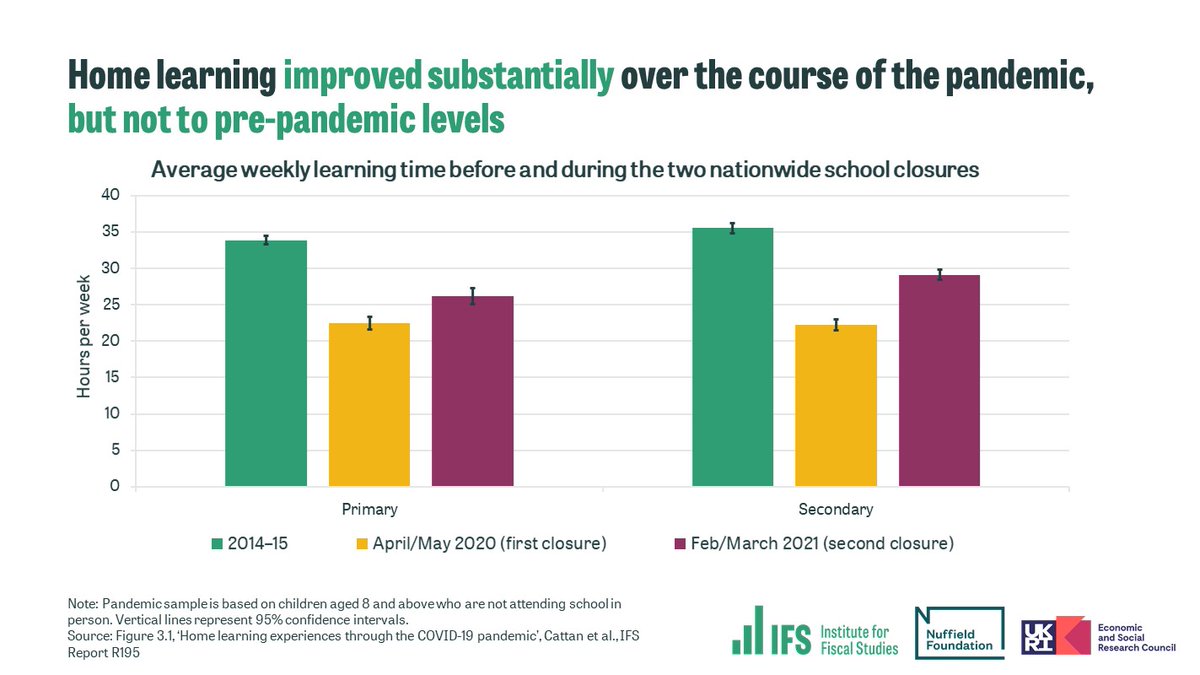NEW: Home learning improved substantially over the course of the pandemic – but this still leaves huge learning inequalities from the first lockdown baked in.
Read our new @NuffieldFound funded report on learning inequalities > ifs.org.uk/publications/1…
[THREAD 1/5]
Read our new @NuffieldFound funded report on learning inequalities > ifs.org.uk/publications/1…
[THREAD 1/5]

Secondary school students’ learning time rose from 22 hours per week in the first lockdown to 29 hours in the second school closures.
Despite these improvements, 40% of children still did not meet the government’s minimum guidelines for learning time.
[2/5]
Despite these improvements, 40% of children still did not meet the government’s minimum guidelines for learning time.
[2/5]

In Autumn 2020, only 40% of pupils were offered interactive resources like online classes for self-isolating.
Support was worse for poorer pupils; 43% of secondary school pupils from the richest families were offered online classes, compared to 35% of poorer pupils.
[3/5]
Support was worse for poorer pupils; 43% of secondary school pupils from the richest families were offered online classes, compared to 35% of poorer pupils.
[3/5]

Home learning inequalities improved from the first to the second lockdown.
During the first lockdown, children from the poorest 20% of families did nearly 8 fewer hours of learning a week than the richest 20%.
By Feb/Mar 2021, their learning hours were roughly the same.
[4/5]
During the first lockdown, children from the poorest 20% of families did nearly 8 fewer hours of learning a week than the richest 20%.
By Feb/Mar 2021, their learning hours were roughly the same.
[4/5]

But with a quarter of parents believing that it will take their child at least a year to catch up, schools and teachers will face big challenges this year.
Catch-up programmes need to ensure the pupils who most need the support can access it.
ifs.org.uk/publications/1…
[5/5]
Catch-up programmes need to ensure the pupils who most need the support can access it.
ifs.org.uk/publications/1…
[5/5]

• • •
Missing some Tweet in this thread? You can try to
force a refresh


















